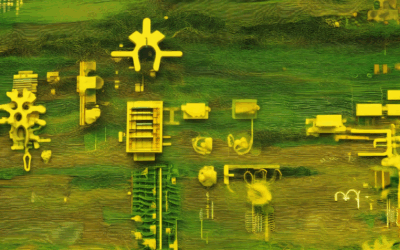The Rising Tide of Climate Change: How Can We Adapt?

1. Introduction
Climate change is one of the most pressing issues facing our world today. It refers to the long-term warming of the planet due to increased levels of greenhouse gases in the atmosphere. One of the most significant consequences of this warming is the rising tide, which threatens to inundate coastal areas and cause severe damage to infrastructure, habitats, and ecosystems. Therefore, it is crucial that we adapt to these rising tides to minimize the impact on our communities and the environment.

2. Impacts of rising tides
Rising tides caused by climate change have far-reaching consequences for coastal communities around the world. Here are some of the most significant impacts:
1. Coastal flooding: As seas levels rise, coastal areas experience more frequent and severe flooding. This can lead to damage to homes, businesses, and infrastructure, as well as disrupt transportation and communication networks.
2. Increased erosion: Rising tides can cause beaches and dunes to erode, making them less effective at protecting against storm surges and waves. This can lead to further coastal flooding and loss of land.
3. Loss of habitats and biodiversity: Rising tides can alter salt marshes, mangrove forests, and coral reefs, leading to the loss of critical habitats for fish, birds, and other marine life. This can have cascading effects on the food chain and ecosystem health.

3. Causes of rising tides
Rising tides are caused by several factors, including thermal expansion of oceans, melting glaciers and ice caps, and changes in ocean currents.
Thermal expansion is the process by which warmer temperatures cause the oceans to expand and rise. This is one of the main causes of rising tides, as the increase in water volume leads to a higher level of the sea.
Melting glaciers and ice caps also contribute to rising tides. As these massive ice formations melt, they release freshwater into the oceans, which can lower the salt concentration and cause the water to become denser and sink. This creates a vacuum effect that pulls the surrounding water upward, leading to a rise in sea levels.
Changes in ocean currents can also affect the height of the tides. Stronger currents can push water towards the shorelines, causing coastal flooding, while weaker currents may allow water to flow away from the shore, reducing the risk of erosion.
Understanding the causes of rising tides is crucial for developing effective strategies to mitigate and adapt to the effects of climate change. By addressing the root causes of this problem, we can better protect our coastlines and ecosystems from the devastating consequences of rising tides.

4. Mitigation strategies
Mitigation strategies involve actions taken to reduce the rate of greenhouse gas emissions and slow down the progression of climate change. Some effective mitigation strategies include:
* Building sea walls and dunes to protect coastal areas from rising tides and storm surges
* Dredging channels and harbors to maintain proper water depth and prevent flooding
* Restoring wetlands and mangroves to absorb excess water and provide habitat for marine life
* Implementing renewable energy sources such as solar and wind power to reduce reliance on fossil fuels
* Promoting sustainable transportation options like public transit and electric vehicles
* Encouraging energy efficiency through retrofitting buildings and appliances
* Planting trees and implementing afforestation programs to sequester carbon dioxide
* Supporting research and development of new technologies to capture and store carbon dioxide.

5. Adaptation strategies
To adapt to the rising tides caused by climate change, there are several strategies that can be implemented. One of these strategies is relocation of at-risk communities. This involves moving people who live in areas that are prone to flooding or other negative effects of rising tides to safer locations. Another strategy is developing flood-resistant infrastructure, such as building sea walls and elevating roads. Additionally, monitoring and early warning systems can be put in place to help communities prepare for and respond to the effects of rising tides. Finally, restoring wetlands and mangroves can also help to reduce the impacts of rising tides by providing natural barriers against storm surges and coastal erosion.

6. Economic impacts of adaptation and mitigation
The economic impacts of adaptation and mitigation efforts for rising tides can be significant. On one hand, building sea walls and dunes, as well as restoring wetlands and mangroves, can be costly. However, these investments can provide long-term benefits by protecting coastlines and ecosystems from the devastating effects of climate change. For example, a study by the National Oceanic and Atmospheric Administration (NOAA) found that every dollar invested in coastal wetland conservation and restoration returns $20 in benefits, including reduced flood damage and improved water quality. Additionally, investing in flood-resistant infrastructure and monitoring and early warning systems can save money in the long run by reducing the need for costly disaster response efforts. However, there may also be short-term costs associated with relocation of at-risk communities and the development of new infrastructure. It is important for policymakers to carefully consider both the short-term and long-term economic implications of adaptation and mitigation efforts when making decisions about how to address rising tides.

7. Political challenges to adaptation and mitigation
One of the biggest challenges to adapting to rising tides is the political aspect. Governments must take action to implement policies and programs that address the issue, which can be met with resistance from coastal communities who may feel their way of life is being threatened. Additionally, international cooperation and funding is needed to tackle this global issue, but it can be difficult to get all countries on board. These political challenges can slow down progress in adapting to rising tides and mitigating its causes. It’s crucial for governments to work together and overcome these obstacles in order to protect the coastlines and the communities that depend on them.

8. Conclusion
In conclusion, the rising tide of climate change presents a significant challenge to our planet. However, there are steps we can take to adapt to these changes and mitigate their effects. By building sea walls and dunes, restoring wetlands and mangroves, and developing flood-resistant infrastructure, we can reduce the impact of rising tides on our coastlines and communities. While there may be economic costs associated with these measures, the benefits of protecting our coastlines and ecosystems far outweigh the costs. It is up to all of us, as individuals and governments, to take action and work together to address this pressing issue. Only by doing so can we hope to preserve our planet for future generations.




0 Comments